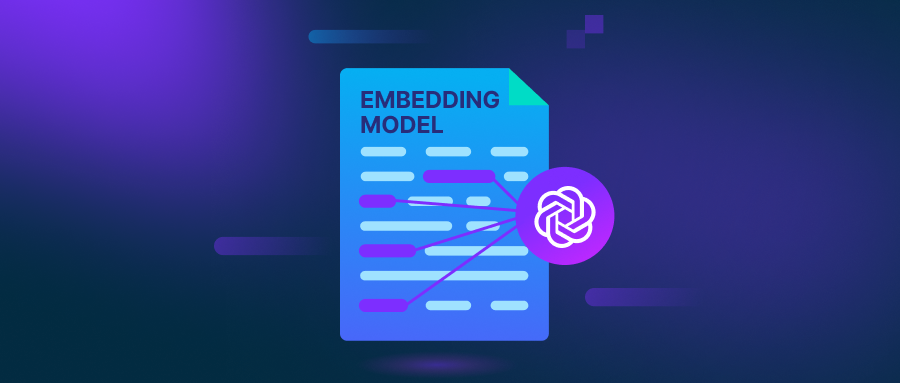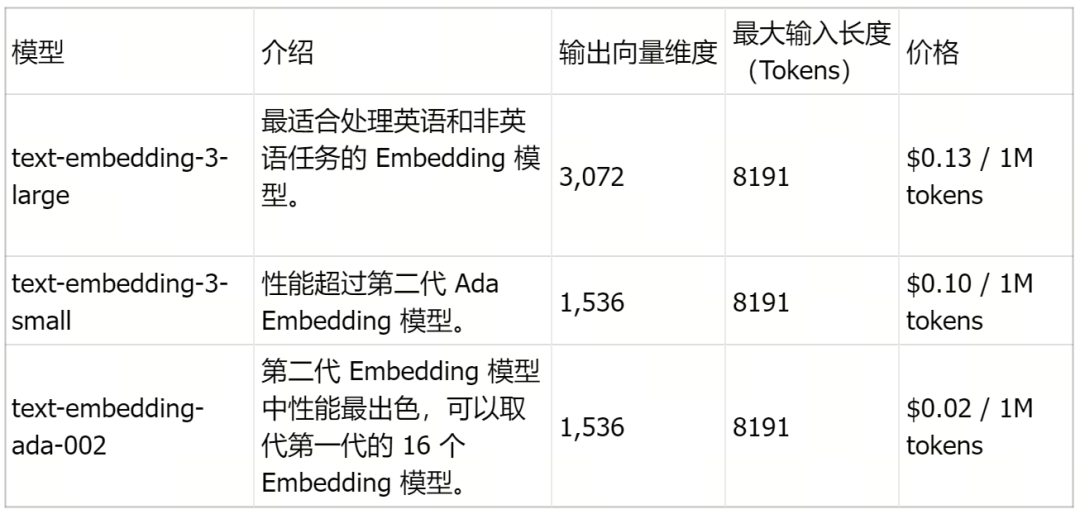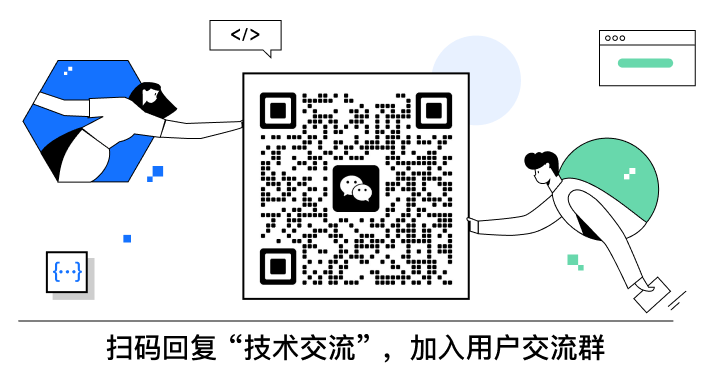如何使用 OpenAI 文本 Embedding 模型构建 AI 系统

Embeddings 向量与 Embedding 模型简介
Embedding 向量是人工智能(AI)中的一个核心概念,它将复杂的非结构化数据(如图像、文本、视频或音频文件等)以机器可以理解和处理的数值向量来表示。这些向量能够捕捉数据中的语义含义和关系,帮助 AI 模型更有效地分析、比较和生成内容。在自然语言处理(NLP)领域中,单词、句子或整个文档被转换为稠密向量,这样一来,算法不仅能够理解单个词的含义,还能够理解它们之间的上下文关系。
Embedding 模型是专用于生成 Embedding 向量的算法。这些模型基于庞大的数据集进行训练,并学习将数据中的潜在模式和关系进行编码,从而生成准确且包含上下文的 Embedding 向量。OpenAI 的文本 Embedding 模型功能强大,可以生成高质量 Embedding 向量,用于语义搜索、聚类、推荐、异常检测、多样性检测和分类等多样的任务场景中。
Embedding 向量和 Embedding 模型的一个关键应用是构建检索增强生成(Retrieval Augmented Generation,RAG)系统。RAG 结合了 Embedding 和生成式 AI 的优势,通过从 Milvus 之类的向量数据库中检索相关信息,然后生成答案,从而应对更复杂的用户查询,提供更准确的响应。RAG 系统特别适合于要求 AI 提供详细、真实的响应的场景。因此, RAG 系统成为了企业和开发者的重要工具。
本文将探讨如何利用 OpenAI 的文本 Embedding 模型构建更智能、响应更出色的 AI 系统。
OpenAI 文本 Embedding 模型
OpenAI 提供了一系列为各种自然语言处理(NLP)任务量身打造的文本 Embedding 模型。其中,传统的 text-embedding-ada-002 模型以及最新的 text-embedding-3-small 和 text-embedding-3-large 模型尤为出色。text-embedding-3-small 和 text-embedding-3-large 模型于 2024 年 1 月 25 日发布,标志了 AI 领域的重要进步。它们在 text-embedding-ada-002 奠定的坚实基础上进一步发展。以下表格比较了上述三种模型并介绍了其各自的关键特性:

text-embedding-3-large 专用于处理高精度任务——需要捕捉语言的细微差别的任务。该模型输出向量的维度更大,为 3,072 维,能够编码详细的语义信息,因此非常适合复杂的应用,如深度语义搜索、高级推荐系统和复杂的文本分析等。
text-embedding-3-small 能够出色平衡性能和资源效率。该模型的输出向量维度为 1,536 维。相比旧的 text-embedding-ada-002 模型,text-embedding-3-small 模型在保持文本 Embedding 更紧凑的同时,进一步提升了性能。这个模型特别适合实时应用或计算资源有限的场景,因为它在控制模型开销的情况下能够提供高精度。
text-embedding-ada-002 在上述两个新模型推出之前,是 OpenAI Embedding 最出色的模型。该模型以较为平衡的方法处理广泛的 NLP 任务。该模型的输出向量维度为 1,536 维。text-embedding-ada-002 模型相较于在它之前发布的模型,性能得到了提升,可以提供高质量 Embedding 向量,适合各种应用包括语义搜索、分类和聚类等。
使用 OpenAI 文本 Embedding 模型生成 Embedding 向量
使用 OpenAI 文本 Embedding 模型生成向量主要有两种方式:
PyMilvus:Milvus 向量数据库的 Python SDK,可以无缝集成 text-embedding-ada-002 之类的模型。
OpenAI 库:由 OpenAI 提供的 Python SDK。
在接下来的部分中,我们将以 PyMilvus 为例,演示如何使用 OpenAI 的文本 Embedding 模型生成向量。更多有关使用 OpenAI 库生成向量的详细信息,我们建议您参考 AI 模型页或查阅 OpenAI 的文档。 生成向量后,我们可以将向量存储在 Zilliz Cloud(全托管的 Milvus 向量数据看服务) 中,以便后续进行语义相似性搜索。以下是四个关键步骤:
注册 Zilliz Cloud 账号。
在 Zilliz Cloud 中创建 Serverless 集群并获取集群公共 Endpoint 和 API 密钥。
在集群中创建 Collection 并插入您的 Embedding 向量。
对存储的向量进行语义搜索。
使用 text-embedding-ada-002 生成向量并将向量插入 Zilliz Cloud 用于语义搜索
使用 text-embedding-3-small 生成向量并将向量插入 Zilliz Cloud 用于语义搜索
使用 text-embedding-3-large 生成向量并将向量插入 Zilliz Cloud 用于语义搜索
OpenAI 文本 Embedding 模型与其他主流模型对比
随着自然语言处理(NLP)技术的快速发展,新的 Embedding 模型不断涌现。HuggingFace 的 MTEB 排行榜是帮助我们了解新模型的宝贵资源。以下,我们列出了一些近期值得关注的模型,它们的性能与 OpenAI 模型不相上下。
Voyage-large-2-instruct: 一个基于指令优化的 Embedding 模型,针对聚类、分类和检索等任务进行了优化。在拥有明确指令或查询的任务中表现出色。
Cohere Embed v3: 旨在评估查询与文档的相关性及内容质量。该模型提升了文档 reranking,并且能有效处理复杂的数据集。
Google Gecko: 紧凑的模型,从大语言模型中提取知识,能够在保持高效的同时提供强大的检索性能。
Mxbai-embed-2d-large-v1: 特点是双重降维策略,减少了层数和 Embedding 向量维度,使得模型更紧凑,同时保证出色的性能。
Nomic-embed-text-v1: 一个开源、可复用的 Embedding 模型,强调通过开放的训练代码和数据实现透明度和可访问性。
BGE-M3: 支持超过 100 种语言,并在多语言和跨语言检索任务中表现出色。它能够处理稠密向量搜索、多向量搜索和稀疏向量搜索。
如需了解更多 Embedding 模型详情或学习如何使用 Embedding 模型,请访问我们的 AI 模型页面。
总结
本文介绍了 OpenAI 最新的文本 Embedding 模型,特别是 text-embedding-3-small 和 text-embedding-3-large,它们相比 text-embedding-ada-002 有了显著的提升。这些高级模型在语义搜索、实时处理和高精度应用等任务中提供了更好的性能。
此外,本文还展示了如何通过 PyMilvus 使用 OpenAI 模型生成向量,并使用全托管的 Milvus 向量数据库服务 Zilliz Cloud 进行语义搜索。
作者介绍

Fendy Feng
Technical Marketing Writer at Zilliz











评论